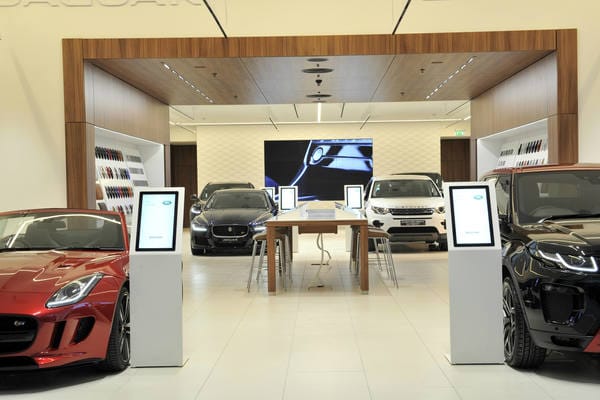We’ve seen the first phase of digital in retail settle and it has touched every vertical – clearly the importance of making digital part of the in-store experience cannot be underestimated. But what’s the next step? Introducing powerful retail analytics to measure and inform the impact on ROI of in-store digital solutions. Why? To help retailers to make real time business decisions to improve the store and connect with their customers.
Not being customer-centric is today’s biggest threat to any business. Amazon isn’t destroying retail – poor customer service and experience is doing that. Uber isn’t destroying the taxi business nor Airbnb the hotel business – not being customer-centric made Uber and Airbnb more appealing options. While the term ‘disruptive technology’ implicates technology in the downfall of traditional business industries and models – emerging technology in fact offers all businesses the opportunity to reconnect with customers in a more meaningful, useful, delightful way than ever before.
Closing the circle
By adding analytic tools to in-store digital display solutions, retailers are able to usefully measure and understand the performance not only of those AV solutions but of the store itself. How? By reviewing the data it provides, making content more relevant, by improving the in-store experience, and by increasing ROI.
How do we measure that data, and what factors can we bring in to drive content?
Firstly, we can measure the success of in-store digital solutions using discovery technologies like facial recognition or detection, heat mapping or tracking touchscreen journeys. Secondly, we can introduce macro-data sources – like live weather analytics – to direct what is happening in-store making it more relevant to the consumer. By getting the relationship between solutions and analytics right – the customer is better understood, better served and better satisfied – and business thrives. There are many examples of retailers who are optimising their business through intelligent use of AV solutions and analytics, we highlighted 4 at our recent event in London.
Solution: Automotive footfall analysis
We provide daily reports for all Rockar stores which they feed into a live dashboard which their partner manufacturers can access and interrogate to understand every facet of performance. Things like age and gender split can be used to refine content and offers combined with online data and insights gleaned from what is happening outside store including test drives and new accounts. Through this data, Rockar has evolved to a more concentrated mix of tactical price and brand messaging content creating greater impact with customers.
Solution: Touch
We’ve been providing in-store displays for HP across Europe – HP’s challenge has been to stand out as their products sit within host retailer sites.
By using touch data to help measure the ROI from displays we are able to track touches and dwell time which feeds back into the next generation content ensuring that it stays relevant to customer preferences and needs. The data analytics triggers content that highlights specific features, for example, or upsells and downsells HP products in the same category. This means that customers view content that is meaningful and informative for them in a delightful way – simulating an app experience rather than a catalogue experience. In addition our live reporting portal pulls data by store so each store’s analytics can be viewed over a period of time to understand what products and what content works best.
Solution: Weather data
The Korean cosmetics retailer, Etude House, has experimented with using digital signage in conjunction with retail analytics and weather data to improve sales of certain products – with significant success with Samsung. Firstly, data was analysed to establish which products perform best in sunny and rainy weather conditions. Secondly, digital signage was programmed to display the right products according to the weather conditions. Finally, analytics allowed Etude House to establish what impact the live board had on purchases. Large increases in purchases was the result, and dashboard analytics allowed the retailer to understand quickly the results.
Solution: Market data
We have covered the success of Nike’s NYC flagship store in previous blogs. However it’s worth highlighting a particular area of the store here to show how intelligent use of market data can lead to simple solutions to guide digital signage and that drive sales. Within the flagship store is the SPEED shop – with it’s own entrance – that utilizes localised Nike app data in order to stock and restock its shelves based on consumer wants. Digital displays focus on the current top 10 selling items specific to NYC for men and women and those items are made readily and easily available. The digital signage and merchandising changes with what’s on the floor, based on what items are selling best online in the postcode. Customers can also reserve shoes online that they want to try, and on arrival at the store will find a locker with their name on it containing the shoes which can be opened using their smartphone. Customers in SPEED can use their phone to check out without ever having to stand in a line.
Mull it over
So what are the best practices retailers can adopt to maximise the effectiveness of the digital technology already present in their bricks and mortar stores? What drives ROI from an audio visual digital solution? Here are our three take-home points:
- Digital signage needs to prove it’s worth to your business, with real world data.
- That data must be used to make content more relevant and improve the customer experience – the aim is to reconnect with the customer.
- Intelligence gained from analytics must be repeatedly used to evolve your audio visual solution over time, keeping it fresh.
At MediaZest we are excited and inspired by the possibility of helping connect our clients brands with their customers through creative and intelligent audio visual solutions and retail analytics. To discover what we can do for your ROI, get in touch.


Recent Comments